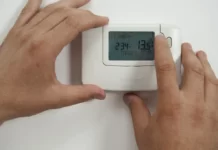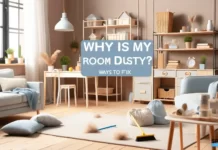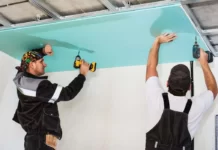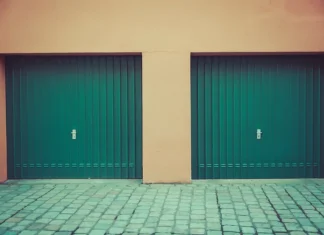Most people have come across mold in their homes. It comes in various forms and colors such as green and black, is powdery, and looks like soil when it ages. Most types of mold in residential properties are harmless if removed early enough. However, it’s advisable to get rid of mold as soon as it presents itself. Allowing it to develop or accumulate increases its chances of being harmful to you and damaging your home.
Mold tends to appear on surfaces prone to getting moist and whose material can serve as food to the fungus. Such surfaces could be anything from a wooden door to a piece of furniture to bathroom walls. You can eliminate mold on your own if it hasn’t covered a large area. However, if it has multiplied and spread, consider requesting the services of mold removal professionals by visiting this website and similar others.
If you think the mold problem in your home is fairly minor, keep reading to find out how you can address it depending on the surface affected.
Safety Precautions
Mold spores are harmful to your health when inhaled. Some people, such as pregnant women and people with lung issues and asthmatic conditions, are more vulnerable when exposed to mold. That’s why it’s a must to protect yourself as you go about the removal.
Seal off the area you’re removing mold from to prevent the spores from getting into other rooms. If it’s in your bedroom, cover the space at the bottom of the door and your ventilation or air-conditioning system.
Open the windows to allow airflow. Put on long-sleeved clothes you rarely wear, protective glasses, gloves, and a face mask. The clothes, gloves, and glasses would prevent the mold spores from coming into contact with your skin. The mask prevents inhalation of mold spores, which can cause respiratory complications.
Mold Removal Products
There are many mold removal products and chemicals on the market, but some of them can be harmful if used incorrectly. Fortunately, you may be able to get rid of mold with everyday products that are likely already in your home, such as:
1. Ammonia
This substance is highly concentrated, making it corrosive and produce a stringent smell. Put on gloves and a face mask when handling it. It’s effective in removing mold from nonporous surfaces.
Here’s what you should do:
- Mix ammonia and water using a 1:1 ratio.
- Spray the resulting mixture on the surface with mold.
- Leave it as is for three to four hours.
- Wipe the surface and rinse off the ammonia thoroughly.
Take note that you shouldn’t mix ammonia with bleach. Mixing bleach with ammonia produces toxic and harmful gases.
2. Bleach
Bleach is ideal for eliminating mold from nonporous surfaces as well. On porous surfaces, you can use it to get rid of stains and disinfect.
For mold removal purposes, do the following:
- Mix bleach and water using a 1:10 ratio.
- Spray it on the surface with mold.
- Allow the mixture to air-dry on the surface.
- Don’t rinse it off.
3. Borax
This natural product is gentle but excellent for the removal of mold on porous and nonporous surfaces alike. It kills the fungus by altering the pH level of the environment it’s growing on.
Follow these steps:
- Mix borax and water using a 1:10 ratio.
- Spray it on the mold-infested surface.
- Allow to air-dry. There’s no need to rinse it off.
4. Baking Soda
This serves several purposes in mold removal. It removes the mold from the surface by changing the pH of the area. Baking soda also absorbs moisture from surfaces and has deodorizing properties.
To use baking soda in mold removal:
- Mix four glasses of water with one tablespoon of baking soda.
- Spray the solution on the mold-infested surface.
- Leave it on the surface for one hour.
- Scrub and then wipe off the surface.
- Rinse it with soapy water or a vinegar-water solution and air-dry.
5. White Vinegar
White vinegar works on both porous and nonporous surfaces. It kills mold since it has an antifungal composition and inhibits the growth of the fungus.
Here’s how you can use it to stop mold in its tracks:
- Mix vinegar and water using a 1:1 ratio.
- Spray the solution on the mold-infested surface.
- Leave it on the surface for one hour.
- Wipe off the mold with a damp cloth.
- Let the surface air-dry.
6. Hydrogen Peroxide
This should have a concentration of at least 3% to effectively remove mold and shouldn’t be diluted. Hydrogen peroxide kills mold by breaking down the significant components of the fungus, such as its DNA.
For mold removal purposes, do the following:
- Pour 3% hydrogen peroxide in a spray bottle.
- Spray it on the mold-infested surface to saturate the area.
- Leave the hydrogen peroxide on the surface for 10 minutes.
- Scrub off the mold, and wipe off the surface.
7. Lemon Juice
Lemons are great for mold removal due to their high acid concentration. They kill mold by breaking it down and lifting it off the surface. They also act as a deodorant.
To use lemon juice in mold removal:
- Squeeze four to five lemons into a spray bottle.
- Spray the lemon juice on the mold-infested surface.
- Leave it on the surface for five minutes.
- Wipe off the surface with a damp cloth.
If the mold doesn’t come off, repeat the process and scrub the mold before wiping it off with a damp cloth.
Identify The Source and How to Get Rid of Mold
Knowing the source of the mold on the surfaces of your home is the first step in solving the problem for good. Mold breeds in areas that have plenty of moisture, that are poorly ventilated, and where it can get food. Most of the surfaces and items in homes are potential food sources for it.
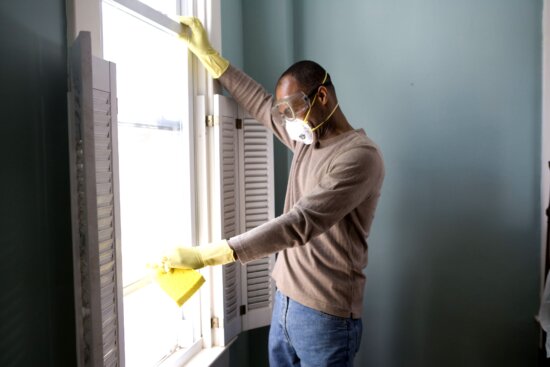
Given those facts, you can prevent the development of mold by controlling the amount of moisture in and properly ventilating your home. Causes of excessive moisture could be leaking pipes and failure to frequently dry some surfaces. After identifying and remedying the source of the mold, follow the procedures described below to eliminate it.
Remove The Mold From General Surfaces
The methods you’ll use to get rid of mold would depend on the surface it’s growing on.
1. Wet Walls
Wet walls in your home could be your kitchen, bathroom, laundry room, or basement walls. To remove mold from them:
- Mix bleach and water using a 1:3 ratio.
- Spray and saturate the area with the solution.
- Leave it on the mold-infested wall for 10 to 15 minutes.
- Scrub the area to remove the mold and wipe it off. Repeat until all the mold is removed.
- Afterward. mix equal parts white vinegar and 3% hydrogen peroxide.
- Spray this mixture on the wall.
- Allow the wall to air-dry, and don’t rinse the solution off.
For external wall surfaces:
- Wet the outer wall with water.
- Mix bleach and water using a 1:3 ratio and apply it on the surface.
- Scrub the mold away using a hard-bristled brush.
- Wipe away the mold.
- Reapply the solution on the clean wall and let it air-dry.
2. Dry Walls
A wall that usually has no moisture on it can still be infested with mold if it’s in a humid environment. When doing the steps below, see to it that the dry wall doesn’t become too wet since wetness could cause further damage.
- Scrub the wall first without using any water to remove some of the mold.
- Mix equal parts 3% hydrogen peroxide and white vinegar.
- Spray the solution on the area until the surface is damp but not saturated.
- Leave it for 10 minutes.
- Scrub the area lightly using a medium-bristled brush.
- Wipe off the mold with house disinfectant wipes.
- Allow the surface to dry.
If the wall is stained, apply a primer before repainting. Consider using moisture-resistant paint or paint with fungicide.
3. Plain Wooden Surfaces
Wooden surfaces in your home could be the floor or a kitchen countertop, among others. To remove mold from them:
- Vacuum the surface or softly brush it to remove the mold that hasn’t penetrated the wood.
- Mix a teaspoon of dish soap with two parts of water.
- Spray the solution on the affected area.
- Scrub the area with a soft-bristled brush.
- Soak the excess water using a cloth or paper towels.
- Mix one tablespoon of borax with one cup of water.
- Spray it on the area.
- Softly brush the surface.
- Allow the wood to absorb the solution and let it air-dry.
Using white vinegar or 3% hydrogen peroxide could stain your wood.
4. Painted Wooden Surfaces
Painted surfaces with mold are easier to work on since the paint acts as a barrier, preventing the mold from seeping into the wall. Here’s how to get rid of mold from such areas:
- Take some paper towels, make them damp, and use them to wipe away the mold (alternatively, use a soft brush).
- Mix one teaspoon of dish soap with two parts of water.
- Spray the solution on the mold-infested area.
- Scrub the surface gently using a soft-bristled brush or with paper towels.
- Mix one part of white vinegar with one part of 3% hydrogen peroxide.
- Spray it on the surface, but don’t soak the area.
- Allow it to air-dry.
5. Leather Surfaces
These could be furniture, shoes, or bags. Follow these steps to remove mold from those items:
- Dry the mold-infested surface.
- Wipe the dried surface with a damp cloth.
- Clean the area using a leather cleaner or a mild soap solution.
Although they sound simple, these methods are enough to eliminate mold from leather surfaces.
6. Fabric
Fabrics commonly infested with mold in your household are kitchen curtains, bathroom shower curtains, and carpets.
There are several ways to clean mold-infested fabric:
Option One
- Brush out the mold from the material using a soft-bristled brush.
- Wash the fabric using hot water mixed with a disinfectant.
Option Two
- Soak the mold-stained cloth in a bleach solution.
- Leave it for 30 minutes.
- Remove and launder the fabric normally.
Option Three
This is for fabrics that you can’t bleach, such as colored cloth:
- Infuse a cloth or cotton wool with white vinegar.
- Place the white vinegar-infused cloth or cotton wool on the mold-infested areas.
- Leave it on for five minutes.
Spot-treating the fabric should remove the mold. But if the mold stains don’t come out:
- Mix white vinegar and water using a 1/4:3 ratio.
- Soak the fabric for one hour.
- Remove the cloth from the solution and rinse to remove the vinegar-water mixture from the fabric.
- Launder the fabric as you normally would.
7. Household Appliances
Household appliances likely to be infested by mold are washing machines, coffee machines, showers, and fridges.
To remove mold from any of those items, wipe the appliance using a piece of cloth infused with white vinegar. White vinegar is safe to use on your kitchen appliances since it’s used in cooking. For your washing machine, clean it regularly with a solution containing equal parts white vinegar and 3% hydrogen peroxide. Run an empty cycle with a hot water and bleach solution once a month to keep mold at bay.
If you want to prevent mold from growing on your appliances, keep them dry as much as possible.
Remove Mold From Mold-Prone Areas
The following are the spaces in your home where mold can easily thrive and the procedures for eliminating and getting rid of mold in them:
1. Bathrooms
These are excellent places for mold growth due to the high moisture content in them. The steps you should follow to eliminate the fungus would depend on the kind of bathroom surface affected.
For nonporous areas:
- Mix equal parts white vinegar and 3% hydrogen peroxide.
- Spray the solution on the mold-infested surface.
- Leave it for 20 minutes.
- Wipe the surface dry.
You can also use lemon juice (as described in an earlier section) for nonporous fixtures such as sinks and faucets. A lemon solution will leave a sweet citrus smell in your bathroom once you’ve applied it.
For bathroom grout:
- Mix white vinegar with 3% hydrogen peroxide in equal parts.
- Spray it on the mold-infested grout surface.
- Leave it for 30 minutes.
- Scrub with a hard-bristled brush.
- Rinse with plain water and wipe the surface dry.
For bathroom tiles:
- Mix bleach and water using a 1:3 ratio.
- Pour the solution on the mold-infested tile floor.
- Leave it for 15 to 20 minutes.
- Scrub with a hard-bristled brush until the mold comes out.
- Rinse the surface and wipe dry.
2. Basements And Attics
Basements and attics are often abandoned spaces with poor ventilation and full of running pipes from the main parts of your house. Those factors could be the sources of mold in your basement and attic. The latter can also be infested with fungus due to roof leakages.
The first step in eliminating mold in those areas is to declutter them and remove contaminated items such as old books. Use a wet vacuum to eliminate the spores in the air from the decluttering. Follow the procedures described for dry or wet walls, depending on the state of your basement and attic walls. Remember to first identify and remedy the source of the mold before removing the mold from the surface.
Invest in a dehumidifier and an air-conditioning system, and regularly use them to prevent future mold growth in your basement and attic. A dehumidifier removes moisture, while the air conditioner ventilates the space. Periodically check the condition of your basement and attic, and watch out for new mold growth.
Conclusion
With the methods discussed above, you can efficiently eliminate and get rid of mold from all the surfaces of your home. But remember that the key to keeping mold away from your property and belongings is controlling the amount of moisture in your space. Try maintaining a humidity level of less than 50% to discourage mold growth, protect the health of your family, and ensure that your home is always in excellent condition.


